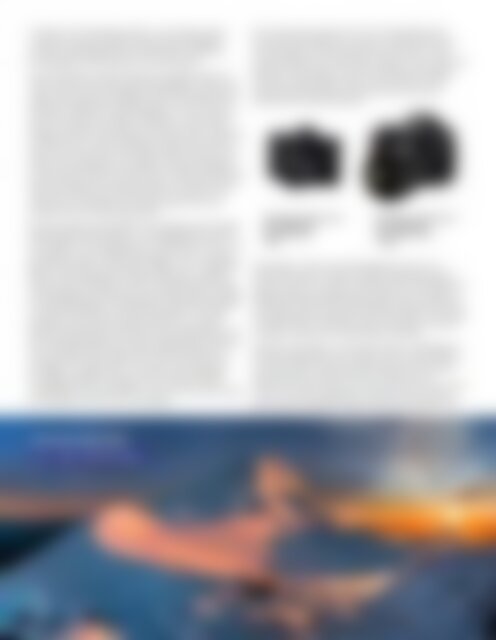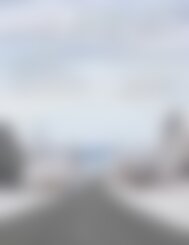NZPhotographer Issue 26, December 2019
As of December 2022, NZPhotographer magazine is only available when you purchase an annual or monthly subscription via the NZP website. Find out more: www.nzphotographer.nz
As of December 2022, NZPhotographer magazine is only available when you purchase an annual or monthly subscription via the NZP website. Find out more: www.nzphotographer.nz
Create successful ePaper yourself
Turn your PDF publications into a flip-book with our unique Google optimized e-Paper software.
to take a lot of interesting photos, many times where<br />
I couldn’t have if I’d been more technically diligent.<br />
It was an enthralling journey of discovery, where my<br />
photography never became a travel burden.<br />
My photography began before the digital age, but<br />
while I was a manual mode photographer, I only ever<br />
used colour print and slide film and never gained any<br />
darkroom experience. Before pixels, with no back of<br />
camera screens for instant feedback, I had to be on<br />
top of my exposure settings, otherwise costs and/or<br />
disappointments mounted up. But even then, handing<br />
my film over to a lab sometimes ended in frustration.<br />
Use of old chemicals could really mess things up. And<br />
there was a big gap in my ability to enjoy complete<br />
control of the end result. Back then I think professionals<br />
were exerting more overall control on their end results<br />
than me, either by processing their own black and<br />
white film or working much more closely with only<br />
selected top-end processing labs.<br />
But then along came digital. According to Mr Google<br />
the first DSLR was Minolta’s 1.75 megapixel RD-175 in<br />
1995. Nikon’s 2.73 megapixel D1 followed in 1999 – the<br />
first digital to be built from the ground up by a major<br />
player. I bought my first DSLR in 2005 - a 6.1 megapixel<br />
Nikon D70S, replacing my Nikon F801S film camera. I<br />
really loved my F801S, but felt that digital technology<br />
had progressed sufficiently for amateurs like me to get<br />
on the bandwagon. Immediately I enjoyed the ability<br />
to adjust ISO frame by frame if required - two main<br />
exposure tools had just jumped from two to three.<br />
Having instantaneous back-of-camera feedback was<br />
also a big development, initially probably just making<br />
me a bit lazier about exposure setting. Otherwise, I<br />
continued to shoot pretty much as I had done with<br />
my F801S. To begin with, I was oblivious to perhaps<br />
the biggest game changer of all - while the D70S<br />
could shoot in Camera RAW, I had no post-processing<br />
knowledge and just stuck with jpegs.<br />
Post-processing seeped into my photography skill<br />
set over the next five or so years. In about 2010 I got<br />
my first edition of Photoshop and since then, have<br />
never looked back. Even then though, it took until mid<br />
2014 for me to click on to the power and wonderful<br />
freedom of RAW files. Finally I was starting to build<br />
post-processing skills that approached what the<br />
professionals were applying.<br />
25.4x25.4mm MOS sensor<br />
20.1 megapixels<br />
24-360 F8.8 lens<br />
340g<br />
35.9x24mm CMOS sensor<br />
24.3 megapixels<br />
24-120 flat F4 lens<br />
1450g<br />
These days, a lot of my photography occurs on<br />
mountain slopes in places where a big heavy DSLR<br />
tends to stay in my pack. Tramping and climbing have<br />
largely replaced backpacker travel, but my need to<br />
travel light and remain photographically spontaneous<br />
and opportunistic remains the same. While I love using<br />
my Nikon D750, I frequently use a mirrorless compact<br />
camera (currently a Lumix TZ220) in the hills.<br />
'Shadow and Light' is a stitched image, created from<br />
8 hand-heldportrait shots, taken on my Lumix TZ220. It<br />
is a dawn view of the top 600 metres of Mt Taranaki<br />
(New Zealand), taken from the southern rim of<br />
Fantham’s Peak. Syme Hut sits to the left of the summit<br />
cone, which has projected a shadow out to the far<br />
left. Mounts Tongariro, Ngauruhoe and Ruapehu are<br />
SHADOW AND LIGHT<br />
F8, 1/160s, ISO125, 24mm<br />
<strong>December</strong> <strong>2019</strong> 31


















